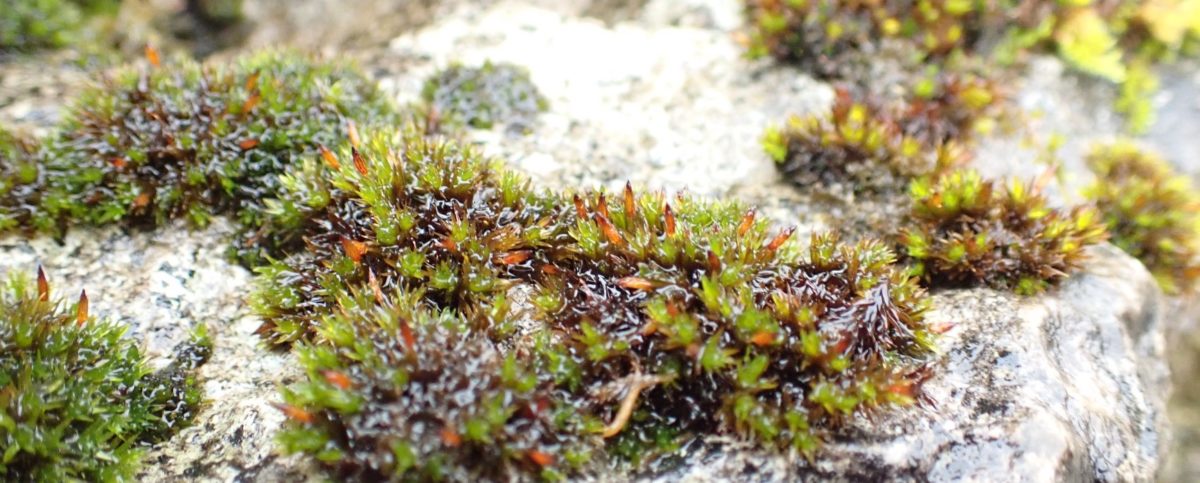Limestone forms a striking part of the landscape in southern Cumbria and over the border into Lancashire. The cliffs and screes of Hutton Roof / Farleton Fell and Whitbarrow Scar loom over the M6 and A590 and are visible for miles. Gait Barrows NNR (Lancashire) claims to be one of Britain’s most important limestone habitats, and further stretches of limestone pavement appear throughout the Arnside and Silverdale AONB, which is where I live. The most visible and exposed stretches of limestone don’t look like ideal bryophyte territory, but the damp recesses of grikes in limestone pavement harbour a range of limestone specialists, and where the pavement is sheltered from the wind by trees, or in damp hollows, rocks and walls are usually covered in a carpet of mosses. Some of the commonest species are easily found and identified.
Rocks and stone walls in woodland
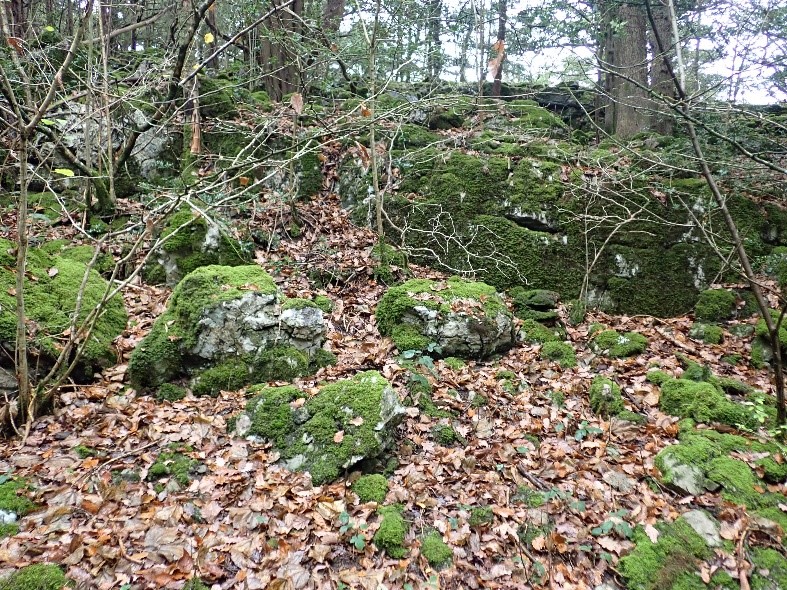

Several mosses are calcicoles – they prefer base-rich rock and are very abundant on limestone walls or rocks in woodland. Ctenidium molluscum is a distinctive moss which appears everywhere here, coating rocks and walls, but also growing among plants in grassland. The tips of the branches are tightly curved and reflect the light, so it appears silky, and often has golden tints. Neckera crispa also predominates, often hanging off walls and rocks in sheets, with large wrinkled, blistery leaves.
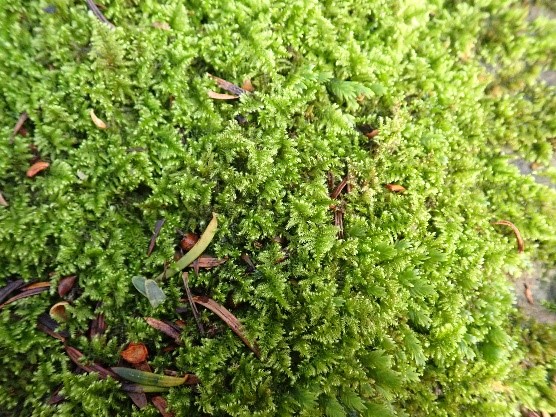
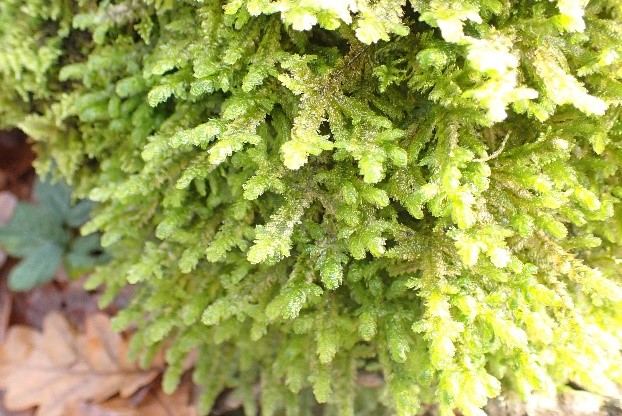
Neckera complanata sometimes appears alongside and is a smaller, more elegant moss, with a similar habit of shoots flattened in one plane but with smooth rather than wrinkled leaves.

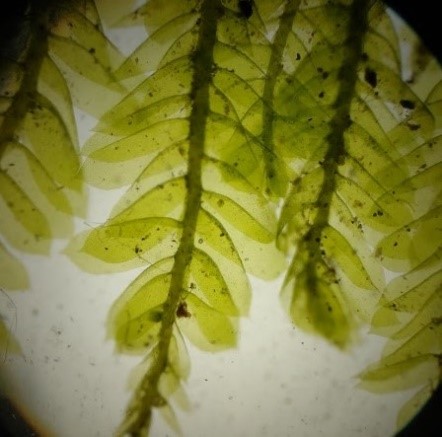
Thamnobryum alopecurum is easily recognisable with its distinctive tree-like habit. It tends to grow over rocks on the ground, or at the base of walls.

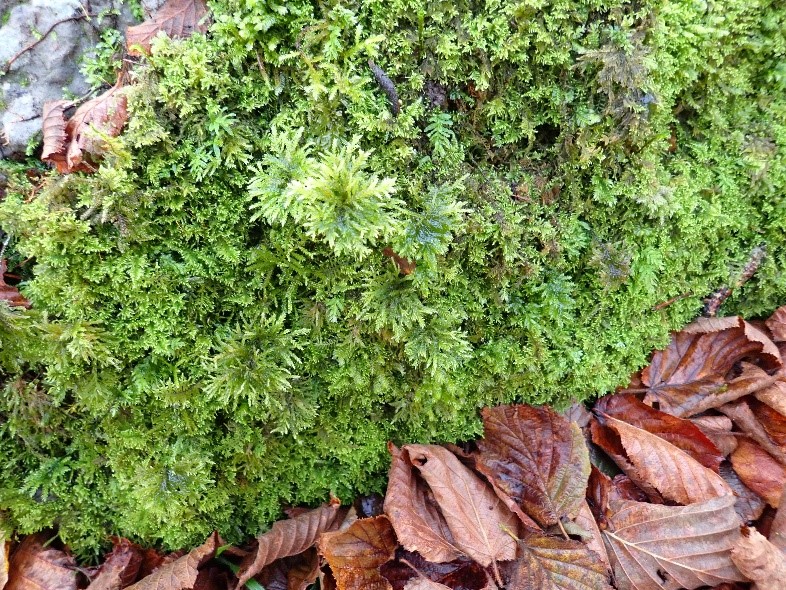
Anomodon viticulosus is less ubiquitous, but where it occurs it can form huge patches on walls or rocky banks, sometimes in more exposed locations. It is often a bright, lime green colour and has a very neat habit, which makes it easy to spot.
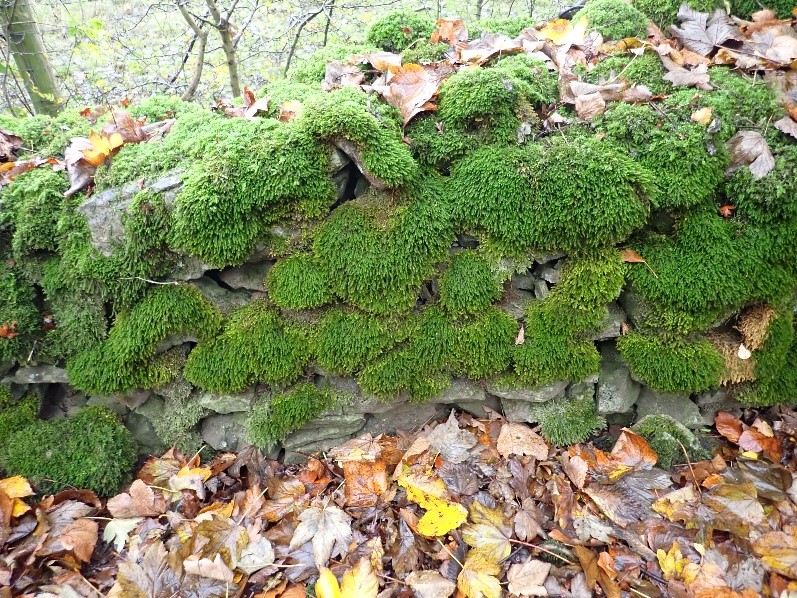
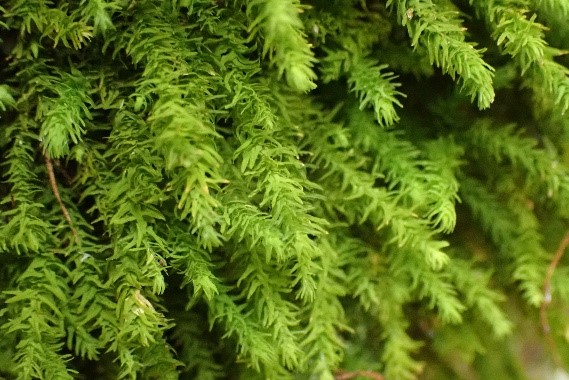
Porella platyphylla is a liverwort that grows in similar conditions on damp walls, but is slightly less common. It can look similar to Neckera crispa, but the branches divide more regularly to form flat fans, and it has underleaves and lobules on the underside of the leaves. Porella arboris-vitae can occasionally be found on rock or in grykes on limestone pavement. It’s a darker, more olive green, with leaves that curl under to form almost tube-like shoots, and under a microscrope you can see that the underleaves are toothed. If you feel like tasting it, it is supposed to have a peppery taste.
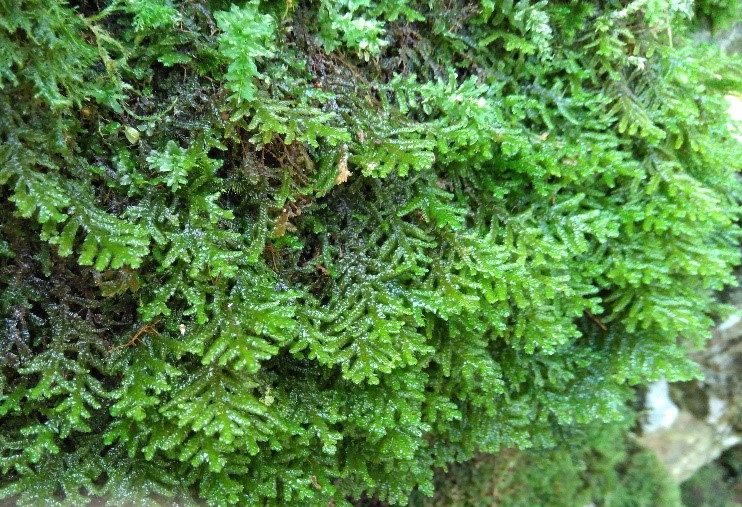
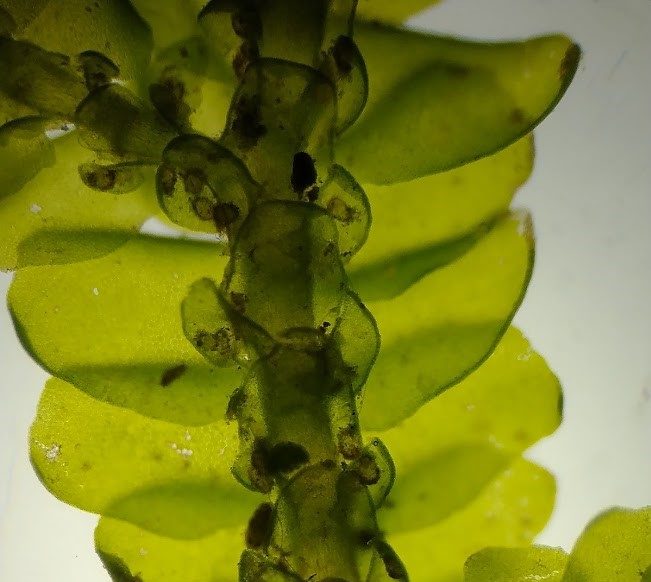
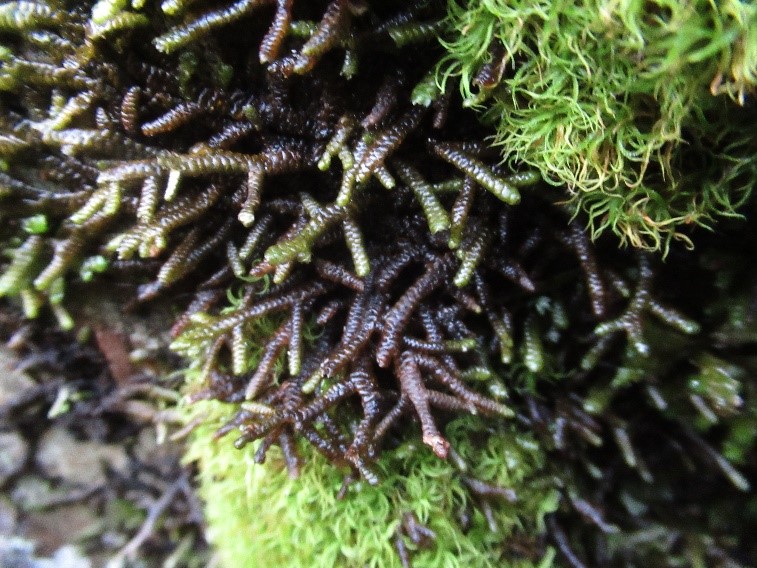
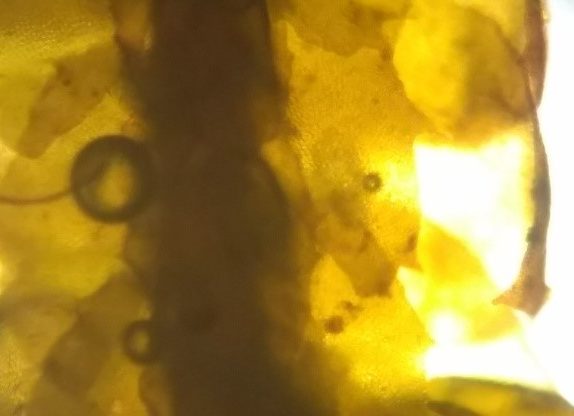
A final interesting and uncommon species is worth mentioning as it’s relatively easy to find. Marchesinia mackaii grows on shaded limestone outcrops and has been described as looking like graffiti. It occurs in several places in Arnside/Silverdale and also around Grange over Sands.
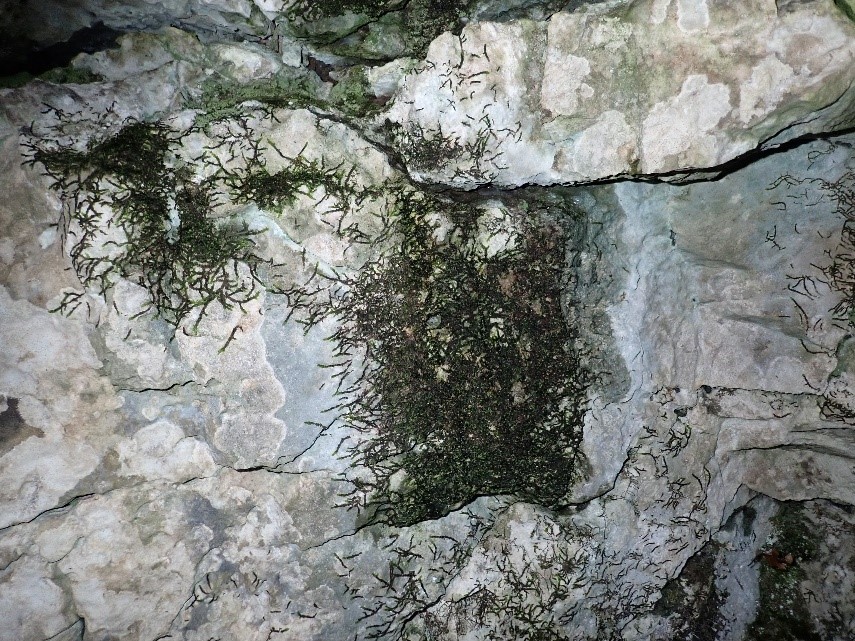
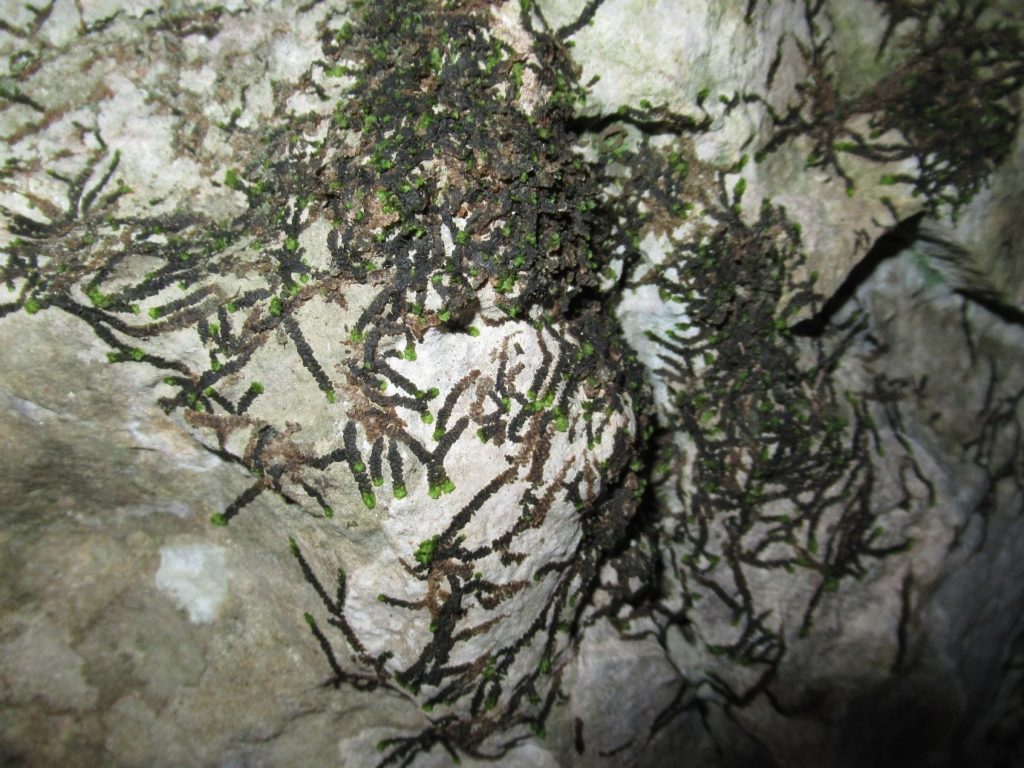
Exposed rocks
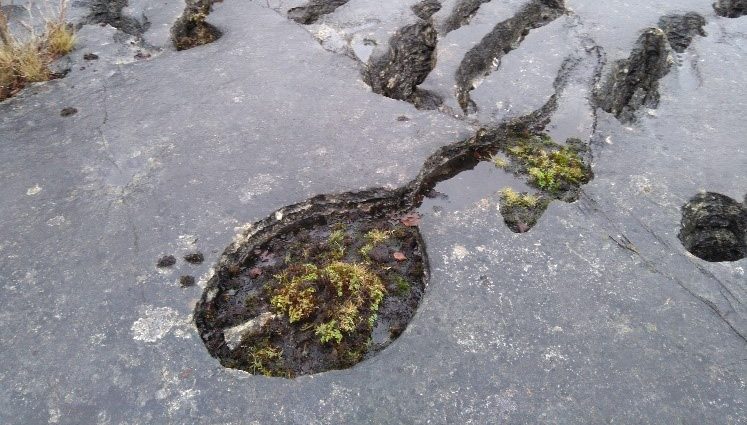

More exposed rocks are likely to be less heavily overgrown with moss, but a good variety of species can be easily found. Homalothecium sericeum is common on limestone, it grows appressed to the rock and has a velvety appearance.

Other mosses tend to form cushions. One of the most common of these is Tortella tortuosa, which is quite a bright or light green and has long wavy leaves that twist into a spiral when dry.
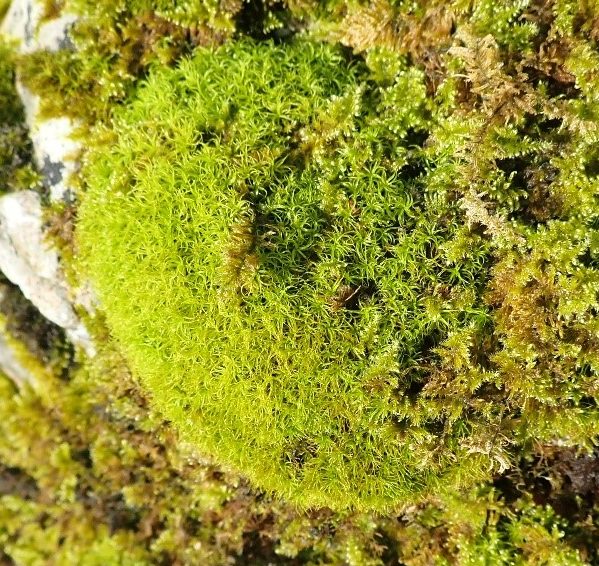
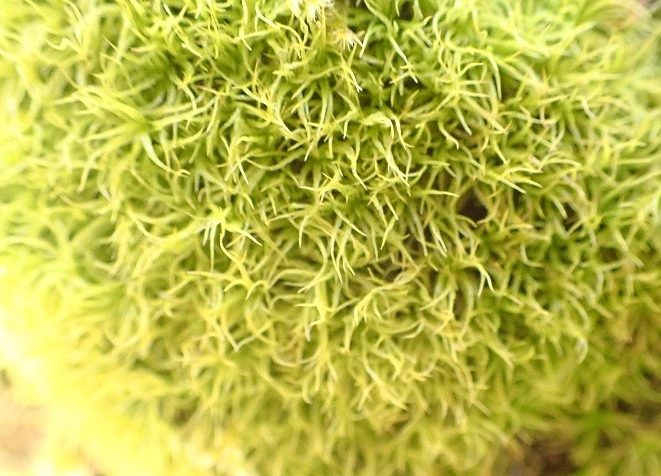
Other Tortella species include Tortella nitida and Tortella densa. T. nitida is fairly common on stone walls and rocks on the south-facing slopes of Silverdale. It likes sunny situations and also seems to be well recorded around Grange over Sands. It forms tight cushions, the leaves are shorter and straighter than T. tortuosa, they often lose their tips and curl distinctively into tight balls when dry.
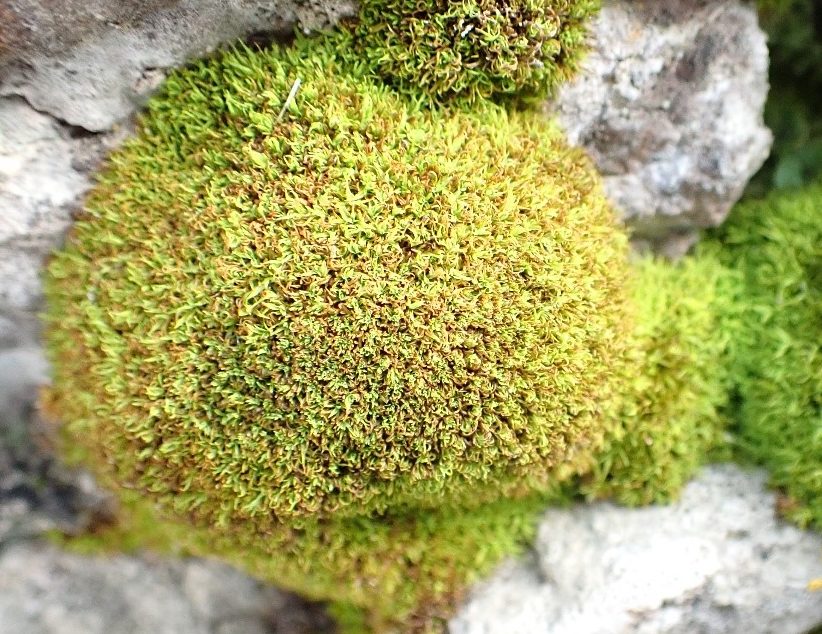
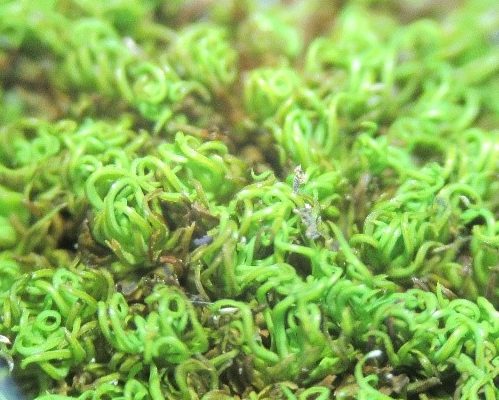
Tortella densa is a rare moss (described as ‘very rare’ in Smith) that is worth looking out for. It grows in a couple of places on the limestone pavement in Arnside and Silverdale AONB. The leaves are erect and straight, and it tends to be a duller green than the other Tortella species.

A very common cushion-forming moss is Schistidium crassipulum, widespread everywhere as it grows on tarmac, concrete and mortar in walls as well as on natural limestone. It forms looser cushions than Tortella species and usually has hair points. It can also be identified by the capsules, which are red when ripe but usually hidden among the leaves, so you need to search them out.

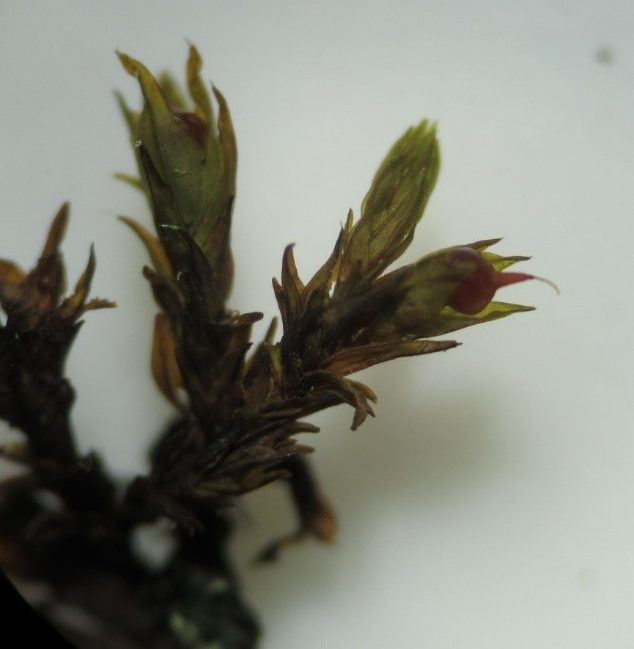
Two Orthotrichum species are common on limestone. Orthotrichum anomalum has reddish brown capsules with a sparsely hairy caliptra which are held clearly above the leaves, whereas Orthotrichum cupulatum has lighter, brownish capsules which are held barely clear of the leaves.
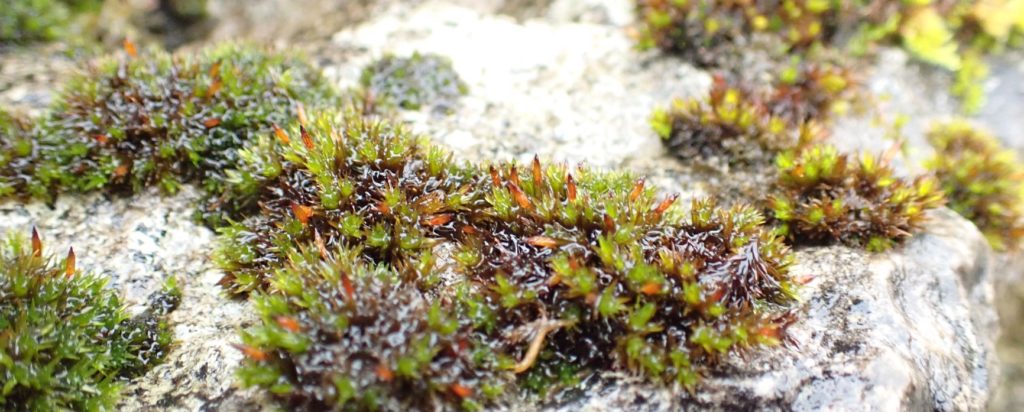
Another very common moss here, growing in rock crevices and on rocky paths, is Fissidens dubius or ‘rock pocket moss’, recognisable from other Fissidens species by its toothed margin and rows of pellucid cells. There are about twenty Fissidens species, but this one seems to predominate in this area.

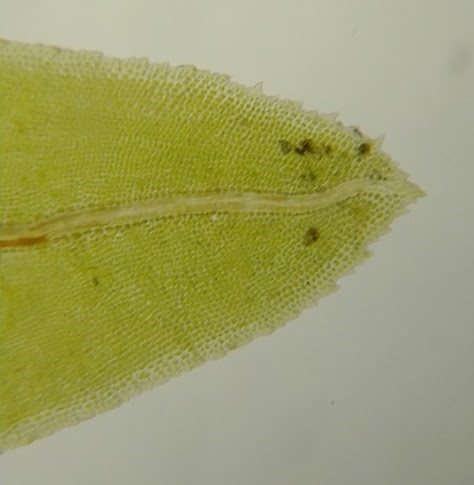
Obviously, this is just a snapshot of the main species. If you find any more interesting bryophytes that you’d like to share, from limestone habitats or elsewhere, or if you’d like help with identification, please share your photos on the Facebook group.
Clare Shaw
